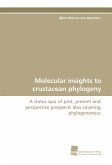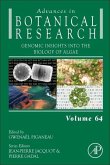The wealth of eye diversity found in nature caused Neo-Darwinist to propose that photoreceptor organs originated independently at least in 40, but possible up to 65 or more different phyletic lines. However, recent molecular genetic evidence points to a common genetic program for eye development in all eye-bearing organisms. Based on these findings it was proposed that the various eye types found in Metazoa derive from a common ancestor prototype eye. The author, Lukas Keller, reviews the various eye types found in the animal kingdom and the recent molecular data that lead to the hypothesis of a monophyletic origin of the eye. His own research on eye selector and opsin genes in bivalvian molluscs further strengthen the idea that all animal eyes derive from a common ancestor eye. Furthermore, his results suggest a functional role of Pax-6 and Six1/2 genes in the gills of the bivalves Arca noae and Pecten maximus and raises the interesting question whether these genes are implicated in the establishment of the chemosensory field.








